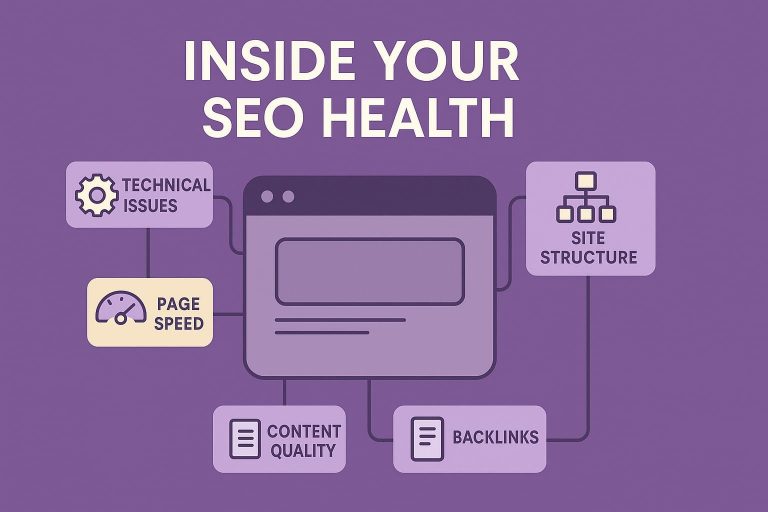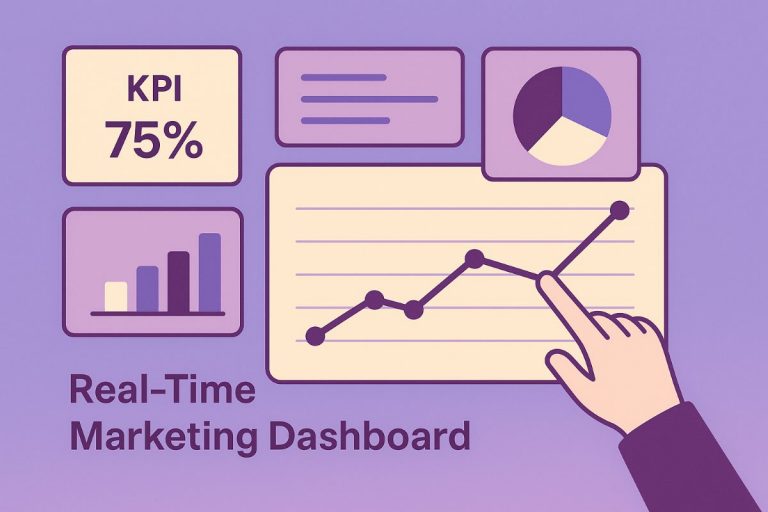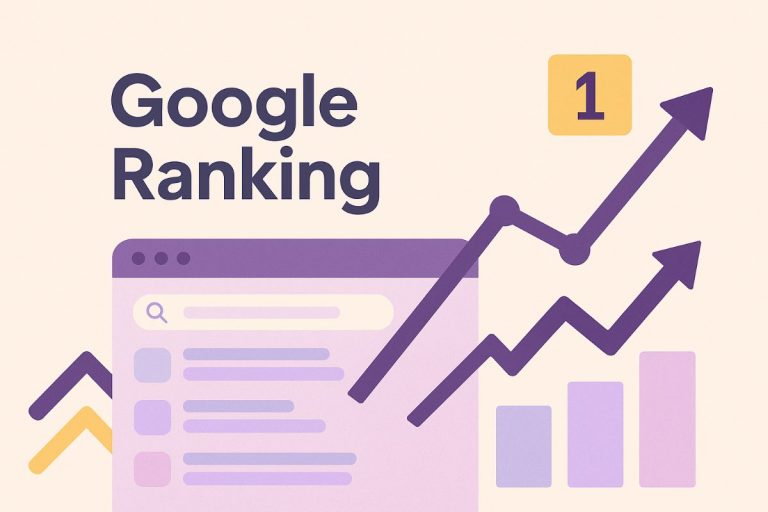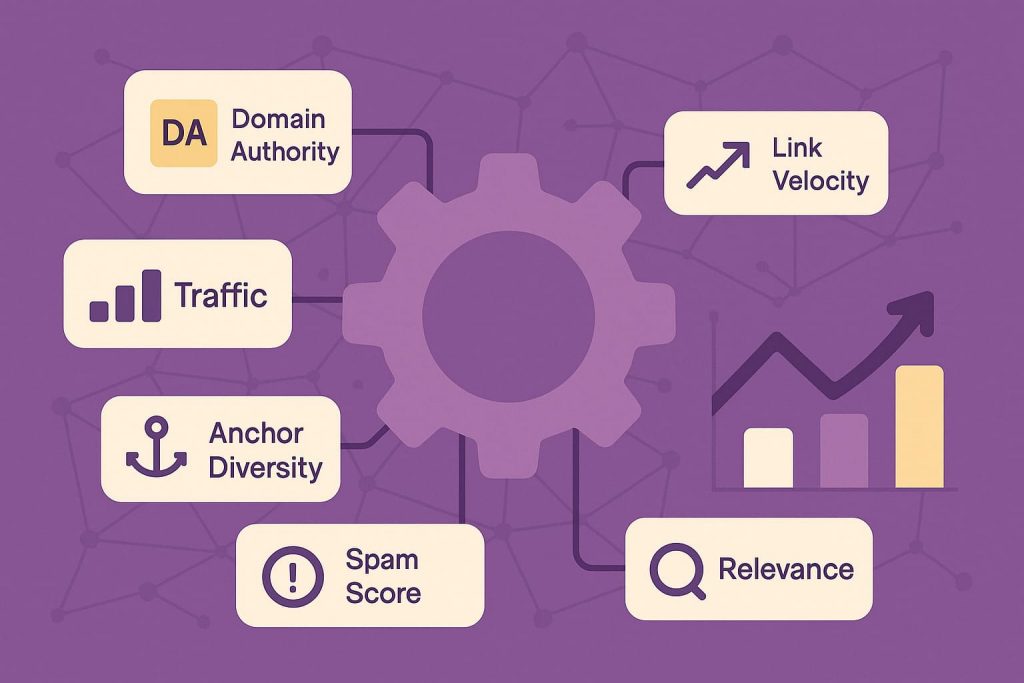
- Understanding Link Metrics: The Foundation of SEO Performance
- Critical Link Metrics You Should Be Tracking
- Tools and Methodologies for Measuring Link Metrics
- How Leading Agencies Approach Link Building Metrics
- Advanced Link Metrics for Strategic Analysis
- Interpreting Link Metrics for Strategic Decision-Making
- Common Pitfalls in Link Metric Analysis
- Future Trends in Link Metrics and Evaluation
- Conclusion: Building a Metrics-Driven Link Strategy
- FAQ
Behind every high-performing SEO campaign lies one quiet truth — you can’t improve what you don’t measure. Link metrics turn that principle into practice, revealing how backlinks truly impact visibility, authority, and growth.
At Lead Craft, we’ve seen it firsthand: when link building stops chasing raw numbers and starts tracking real performance indicators, SEO stops being guesswork. Measuring the right link metrics transforms link acquisition into a repeatable, revenue-driven strategy — one that scales and proves its value with data.
Understanding Link Metrics: The Foundation of SEO Performance
In SEO, not all backlinks carry equal weight. Link metrics show which links genuinely enhance a site’s visibility in Google and its position across Search Engine Results Pages (SERPs). Measuring backlink quality through accurate link evaluation reveals which efforts improve long-term SEO performance instead of vanity metrics.
Key Takeaways
- Link metrics are the foundation of measurable SEO performance.
- Focusing on backlink quality, not quantity, drives sustainable rankings.
- Consistent tracking of link metrics leads to smarter, ROI-focused link strategies.
What Are Link Metrics and Why They Matter
Link metrics are quantitative indicators that show how backlinks affect search engine rankings and overall SEO strategy. In Google’s algorithm, backlinks transmit link equity — the value and trust passed from one website to another. A balanced backlink profile helps search engines assess authority and relevance, two factors essential for consistent growth.
In practice, link metrics guide strategic SEO decisions: which domains to target, which links to remove, and how to allocate resources for maximum performance. They turn link-building into a predictable process aligned with measurable business goals.
Primary functions of link metrics in SEO:
- Measure backlink quality and link equity distribution.
- Evaluate authority and topical relevance of referring domains.
- Detect spammy or low-value backlinks that can harm visibility.
- Prioritize link-building based on measurable search impact.
- Align SEO strategy with business and revenue objectives.
The Evolution of Link Metrics in SEO
Link metrics evolved alongside Google’s PageRank algorithm, which once treated every backlink as a vote of trust. Early SEO rewarded link volume over quality — until the Penguin Update (2012) penalized manipulative linking patterns.
Since then, Google’s ranking systems have advanced to evaluate link intent, topical relevance, and authenticity. This shift replaced mechanical link counting with contextual assessment — rewarding sites that earn genuine authority and user trust through valuable, organic connections.
Critical Link Metrics You Should Be Tracking
Effective link measurement starts with focusing on the critical metrics that actually influence visibility and growth. Tools like Google Analytics and Search Console help identify how backlinks contribute to referral traffic and organic visibility, while authority-based indicators reveal long-term trust.
Prioritize link building KPIs tied to measurable outcomes — backlink quality, domain authority, and organic traffic uplift. These building metrics turn complex data into actionable insight, helping you decide which links to pursue, monitor, or remove.
Domain Authority and Page Authority
Domain Authority (DA) and Page Authority (PA), developed by Moz, estimate the relative strength of domains and individual pages in search engine rankings. Both are predictive, not absolute — derived from link patterns analyzed in Moz Link Explorer.
Use DA/PA as contextual signals, not as standalone truth. For example, when evaluating a potential backlink, compare DA/PA with traffic metrics, relevance, and anchor diversity. A domain with DA 50 but no organic traffic is less valuable than one with DA 35 and steady engagement.
The common misconception: chasing high DA scores alone. Smart SEOs combine link authority data with qualitative checks — ensuring each link genuinely supports topical relevance and conversion goals.
DA Trend Analysis
Tracking a domain authority trend helps verify whether link building compounds real authority growth versus short-term spikes. Moz defines Domain Authority as a predictive score of ranking potential, not a Google signal; use it comparatively over time to assess domain strength and link profile development. In practice, monitor DA alongside changes in linking domains and traffic. Tools that surface DA over time, such as Link Explorer’s DA-over-time view, make progress visible to stakeholders. When DA plateaus while referring domains stagnate, revisit outreach velocity or relevance; sustained DA lift typically aligns with steady acquisition of quality new domains.
Referring Domains vs. Total Backlinks
Referring domains are the number of unique domains linking to you, while total backlinks include all links, even multiples from the same site. For link diversity, new domains often signal broader trust than repeated links. Large-scale studies report stronger ranking relationships for domain diversity than raw link counts, as shown in the Backlinko study on domain diversity and rankings. Ahrefs found top pages steadily earn followed links from new referring domains (+5–14.5%/month), correlating with strong positions.
Spam Score and Link Health
Spam Score, a metric by Moz, indicates how similar a site’s signals are to domains that were penalized or banned. Use it to triage spammy backlinks and assess link risk: audit high-risk domains, review anchors, and remove or neutralize toxic links. If Google flags unnatural links, follow Search Console’s manual actions guidance to fix violations (for example, add proper rel attributes or remove links) and request reconsideration. Updates like the December 2022 Link Spam Update and Google’s spam policies reinforce the need for clean backlink profiles. Our playbook: investigate outliers, prune or rel-tag the worst, replace with earned, relevant links, then re-measure risk and visibility.
Link Relevance and Contextual Metrics
Link relevance matters: Google treats links as signals for content relevance and discovery, and recommends descriptive anchors and contextually appropriate linking. To assess contextual metrics and topical authority, combine automated and manual checks:
- shortlist sites with matching entities or sections using Semantic Search and Entity relationships,
- inspect on-page context—anchor sentence, surrounding copy, and page purpose,
- confirm that the linking page serves users, not link schemes, following Google’s spam policies.
For enterprise programs, this relevance-first approach consistently outperforms vanity authority chasing, especially in specialized related industries where topical fit amplifies downstream rankings.
Dofollow vs. Nofollow Links
Link attributes control how links are interpreted. Historically, rel=”nofollow” did not pass link equity; since 2019, Google treats nofollow, sponsored, and ugc as hints—not directives—for whether to consider links in ranking, as confirmed by Google’s Link Best Practices. Practically, pursue dofollow links for ranking impact, but include nofollow when they drive users and brand visibility (for instance, high-authority media or community platforms). Maintain a natural balance—Google provides no fixed “ideal ratio.” Always label paid placements as rel=”sponsored” and community-generated links as rel=”ugc” to comply and avoid manual actions.
Tools and Methodologies for Measuring Link Metrics
Accurate link measurement requires tools that turn data into strategy. Enterprise teams combine Google Search Console with advanced link analysis tools such as Ahrefs, Semrush, Majestic, and Moz. Each platform contributes unique SEO software features for link performance tracking and backlink analysis. At Lead Craft, we use this toolkit to transform raw link statistics into actionable insights—prioritizing data that guides real ranking gains, not vanity metrics.
Enterprise Link Analysis Tools: Strengths and Limitations
Selecting the right link analysis tools depends on the project’s scale and reporting needs:
- Ahrefs offers one of the largest live backlink indexes and powerful “Best by links” and Link Intersect reports for competitive benchmarking.
- Semrush provides unified visibility through its Backlink Audit module and advanced toxicity scoring—ideal for tracking link building statistics across campaigns.
- Majestic specializes in link-graph visualization with its Trust Flow and Citation Flow metrics, valuable for mapping domain relationships at scale.
- Moz Pro delivers clear Domain Authority and Spam Score trendlines that support long-term trust evaluation.
- Google Search Console remains the definitive reference for verified inbound links and anchor-text data directly from Google.
Experienced SEOs often pair these with Link Research Tools for forensic audits and disavow workflows.
Comparative Table – Major Link Analysis Platforms
| Tool | Strengths | Limitations | Best Use Case |
|---|---|---|---|
| Ahrefs | Largest live index; “Link Intersect,” content gap, DR/UR metrics | No toxicity scoring | Competitive benchmarking & opportunity discovery |
| Semrush | Integrated SEO suite; toxicity scoring; historical data | Slightly smaller index | Continuous monitoring & outreach QA |
| Majestic | Trust Flow / Citation Flow; strong visualization | Older UI | Mapping domain relationships, bulk audits |
| Moz Pro | DA/PA trends, Spam Score insights | Slower index updates | Long-term authority tracking |
| Google Search Console | Verified links & anchors from Google | Limited historical depth | Validation & anchor analysis |
| Link Research Tools | Advanced risk management | Enterprise-only pricing | Disavow and recovery workflows |
Creating a Link Measurement Framework
Building a consistent link measurement framework turns metrics into meaning. Start by defining objectives—brand visibility, lead generation, or authority growth—and weight metrics accordingly. For example, e-commerce may emphasize referring-domain diversity, while SaaS brands prioritize content relevance and conversion-linked links.
Using Google Analytics, Search Console, and visualization tools like Looker Studio (formerly Data Studio), teams can consolidate link data into unified SEO reporting dashboards. Each link record should integrate authority (DA/DR), relevance, and engagement metrics. Lead Craft’s proprietary link-impact scoring framework converts those inputs into a 0–100 performance index that weights authority, relevance, and engagement according to campaign goals. The result is a transparent, adaptable system that visualizes link performance and business impact across any vertical.
How Leading Agencies Approach Link Building Metrics
At Lead Craft, enterprise SEO isn’t guesswork — it’s precision. Our team of strategists and analysts manages 120+ complex SEO projects across global markets, generating 50,000+ qualified leads monthly with a 4.9/5 client rating. Over 10 years of performance marketing experience have shaped a methodology built on one principle: Traffic + Conversion = Sales.
We leverage advanced link metrics tracking to diagnose, forecast, and amplify results. Every campaign merges technical SEO, link profile intelligence, and international SEO expertise into a unified measurement system. This integration allows Lead Craft to connect every link-building decision to real business outcomes — transforming data into growth and performance you can measure.
Advanced Link Metrics for Strategic Analysis
For teams ready to go beyond surface metrics, advanced link metrics unlock the precision needed for comprehensive analysis of link profile health. By pairing foundational data with advanced analytics through the Google Search Console API and modern data science techniques, Lead Craft helps clients reveal hidden ranking correlations and growth opportunities.
This sophisticated SEO approach merges standard indicators like DA/DR with behavioral signals from engagement and referral flow. Mastering both basic and advanced metrics delivers the nuance that separates leading brands from stagnant competitors—transforming static dashboards into predictive intelligence for scalable performance.
Link Velocity and Growth Patterns
Link velocity—the link acquisition rate over time—defines whether a backlink profile looks natural or manipulative in Google’s eyes. Healthy growth patterns show gradual, sustained increases aligned with new content and mentions. Sudden spikes from low-quality sources can resemble unnatural links, which Google’s Penguin algorithm historically penalized.
Optimal velocity varies by industry and authority: startups might add 10–15 % new referring domains monthly, while mature brands grow slower but steadier. Warning signs include rapid surges after campaigns or link losses following algorithm updates. Plan link-building cadence to mirror organic discovery—steady, credible, and contextually earned. That’s sustainable momentum.
Anchor Text Distribution and Analysis
Anchor text distribution shapes how search engines interpret topical relevance. A balanced anchor text analysis blends brand anchors, generic terms, and limited optimized anchors for keywords. Excessive exact-match anchors can signal over-optimization, triggering Penguin-related downgrades.
This natural link profile balance is commonly observed across industry research and large-scale audits: 50–60 % brand or URL anchors, 20–30 % generic or partial-match, and no more than 10–15 % exact-match keywords. Use the Anchor Text report in Google Search Console to track proportions and adapt to link growth.
Link Propensity Metrics
Link propensity measures how frequently a domain links out to other sites—its outbound linking pattern. Sites with moderate, editorially justified outbound activity often indicate healthy linking behavior and stronger contextual value. Conversely, domains with thousands of outbound links per page or identical anchors show low editorial control.
Lead Craft evaluates link propensity using crawlers and page-level sampling: calculating outbound-to-inbound link ratios and contextual diversity. This helps identify sites whose linking tendency aligns with authentic publishing habits—prime candidates for outreach. Tailoring strategy by propensity ensures pitches fit publisher behavior, improving acceptance rates and link quality simultaneously.
Interpreting Link Metrics for Strategic Decision-Making
Turning data into direction is where strategy begins. Link metric interpretation means spotting trends and relationships that shape strategic SEO. Analysts translate thousands of numbers into data-driven decisions that guide link building strategy and strengthen the organic traffic value behind every placement.
Through data-driven marketing and strategic planning, patterns emerge—pages gaining authority faster, anchors correlating with higher engagement, or sudden drops exposing weak networks. By structuring reports for ROI measurement and competitive analysis, teams can reveal insights missed in surface-level dashboards and convert metrics into precise, defensible actions for both stakeholders and clients.
Competitive Link Gap Analysis
Competitive link gap analysis compares your backlink profile with direct rivals to uncover new link opportunities. Using competitor research tools such as Ahrefs or Semrush, analysts run backlink comparison reports to map unique referring domains competitors already leverage.
Prioritize gaps by authority, topical fit, and relevance to shared target audiences. High-value links with strong editorial context become primary outreach targets, while low-authority or irrelevant domains can be ignored. Structured link gap analysis turns broad competitive analysis into a focused list of attainable wins—integrating results directly into campaign strategic planning.
Prioritizing Link Building Efforts Based on Metrics
Not every link delivers equal return. Link building prioritization depends on balancing potential gain against acquisition cost. Use metrics such as domain authority, traffic, relevance, and effort level to calculate link building ROI and guide strategic outreach.
A simple scoring matrix helps visualize impact:
| Metric | Weight | Description |
|---|---|---|
| Domain Authority / Rating | 30 % | Influence potential |
| Relevance & Context | 40 % | Topical fit and brand alignment |
| Acquisition Difficulty | 20 % | Outreach effort / cost |
| Traffic Value | 10 % | Referral or conversion potential |
Applying this efficiency model optimizes resource allocation, reduces opportunity cost, and turns raw link building statistics into measurable growth priorities.
Common Pitfalls in Link Metric Analysis
Even skilled marketers misread data. Frequent link metric pitfalls stem from chasing numbers without context—classic analysis mistakes like confusing correlation with causation or ignoring sampling bias. Treating every drop in authority as a penalty is another SEO misconception rooted in data misinterpretation.
Build checks into analysis workflows: compare multi-tool data, track significance over time, and verify whether fluctuations exceed natural variance. Clear documentation and peer review prevent data analysis errors before they impact reporting. Mastery of interpretation means distinguishing real trends from noise and building strategies on statistically sound insights.
Understanding Toxicity Score
Managing toxic backlinks is essential for long-term visibility. Tools like Semrush and Moz evaluate harmful links using toxic link detection patterns based on domain quality and anchor context. Scores help identify spam clusters, negative-SEO attacks, or link spam networks before they trigger manual penalties.
When risk crosses the threshold, compile a Google Search Console export, audit manually, and—if necessary—use the Google Disavow Tool. Disavow only links that are demonstrably manipulative; overuse can reduce beneficial authority. Effective link detox combines automated scoring with human verification, protecting domain health through targeted, evidence-based cleanup.
Future Trends in Link Metrics and Evaluation
The future of link evaluation is shaped by AI in Search, as seen with AI Overviews, and ongoing algorithm evolution that refines how authority and relevance are understood. Search systems powered by machine learning increasingly assess context, intent, and user experience signals rather than raw link counts. As Google continues to evolve, the focus shifts from volume to verified E-E-A-T — experience, expertise, authority, and trust.
Emerging link quality signals will emphasize semantic alignment, author or creator credibility, and page experience aligned with Google’s helpful-content guidance. Future SEO trends indicate that links will function more as credibility references within entity networks than as isolated ranking votes. To prepare, build structured data consistency, strengthen author profiles, and monitor how behavioral and UX data connect to authority flow — keeping your strategy ahead of the curve.
Conclusion: Building a Metrics-Driven Link Strategy
Sustainable growth comes from blending precision with insight. A metrics-driven strategy transforms link building from guesswork into data-driven SEO, where every action is measurable and aligned with business outcomes.
By applying these frameworks — link evaluation, prioritization, and advanced analytics — marketers elevate both the science and art of strategic link building. With data-driven marketing and disciplined strategic planning, every backlink becomes a deliberate investment in SEO success. Start implementing these systems now to turn measurement into momentum.
Key Takeaways
- Measure links for quality, context, and consistency — not just count.
- Integrate multiple data sources for real-time insight.
- Balance analytics with strategic creativity.
- Link metrics → smarter planning → measurable growth.
FAQ
What are the important link metrics to measure?
Track authority (DA/DR), relevance, referring-domain diversity, anchor-text balance, and link-velocity trends.
How do link metrics impact SEO rankings?
High-quality backlinks signal trust and relevance to search algorithms, improving visibility and ranking stability.
How to measure link quality?
Evaluate domain authority, topical relevance, organic traffic, and contextual placement using tools such as Ahrefs, Moz, and Semrush.
What tools are best for tracking link metrics?
Combine Google Search Console, Ahrefs, Semrush, Majestic, and Moz Pro for cross-validated backlink data.
How do you interpret link metrics to improve your strategy?
Analyze trends, identify gaps, and refine outreach and content priorities to build sustainable authority growth.














 429
429  6 min
6 min




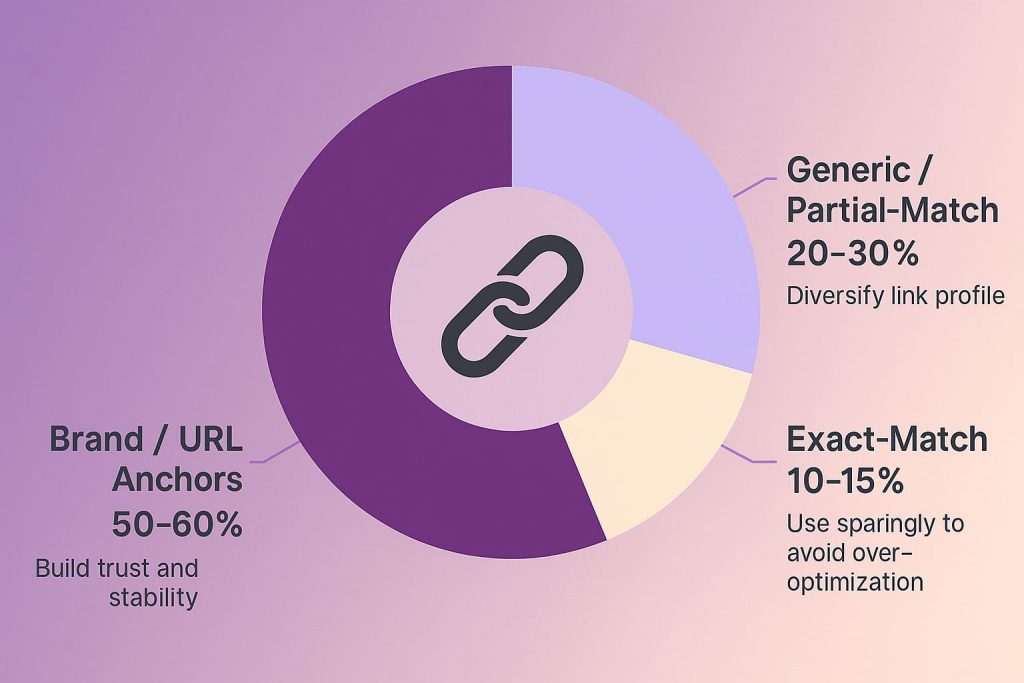
 Share
Share
 X
X
 LinkedIn
LinkedIn













